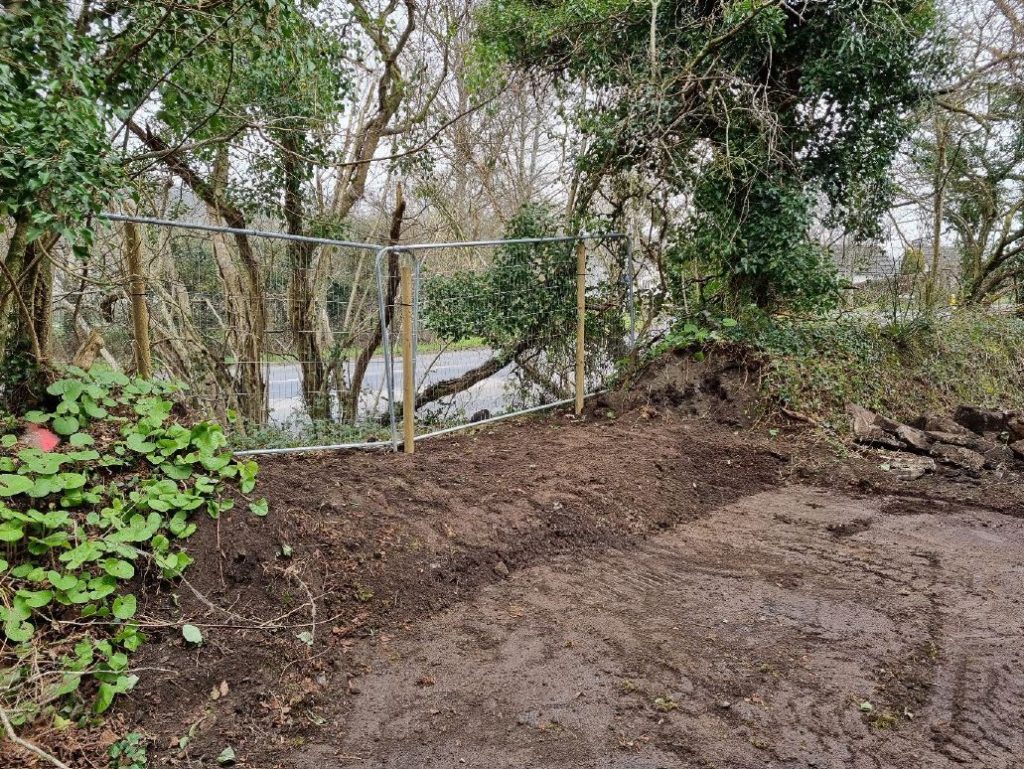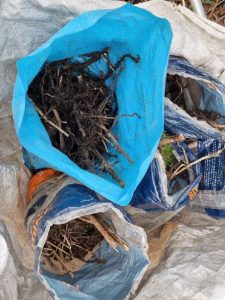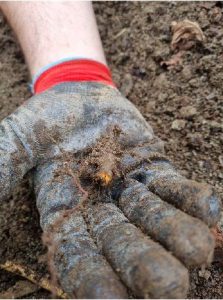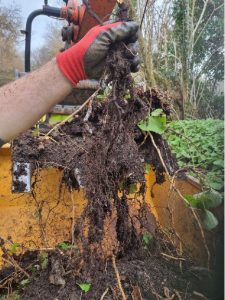Background
An area of approximately 20sqm of Japanese Knotweed was identified within a proposed development area.
The location of the Japanese Knotweed was within the planned main entrance for the development.
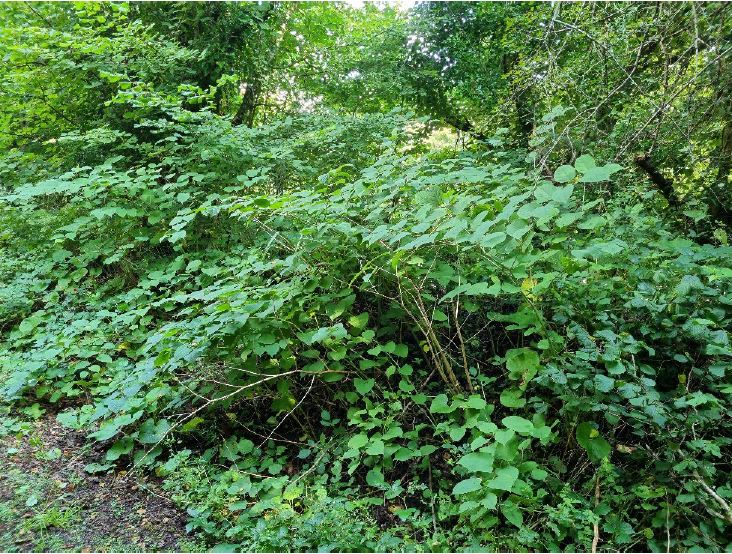
That being the case, a form of excavation was required, to ensure that the area of ground works for the main entrance would be free of any Japanese Knotweed material, as although herbicide control options will eventually bring the Japanese Knotweed under control, the remaining rhizome and crown still remains within the soil and can be regenerated when disturbed.
There are a number of options, when using excavation as a control programme; these include off site disposal at an appropriately licensed landfill, on site cell burial, or screening, where the Japanese Knotweed is screened and bagged for off site incineration or landfill, with the remaining material put into a bund for ongoing monitoring.
Cost advantages for using screening
Off site disposal of excavated material, although provides an immediate answer, does attract high costs for disposal.
Cell burial, provided there is a suitable area for the cell, can be very efficient, but as the estimated total volume of material was expected to be less than 10 cubic meters, and there was space within the development for the monitoring bund, it was agreed that a simple screening technique would be both effective and result in a fraction of the cost of either off site disposal or a cell burial.
What was done?
Before the excavation began, knowing the likely estimate of material that was going to be excavated, the total area for the bund was calculated, keeping into consideration the maximum depth of the bund being 50cm as recommend by the Property care Association Code of Practice.
A suitable location for the bund was then identified and Heras Fencing put up around the area to keep the future bund secure during the monitoring period. Then a barrier membrane was put down for the material to be stored on; this then prevents any Japanese Knotweed material that may be found within the excavated material and stored within the bund from contaminating the ground below the bund.
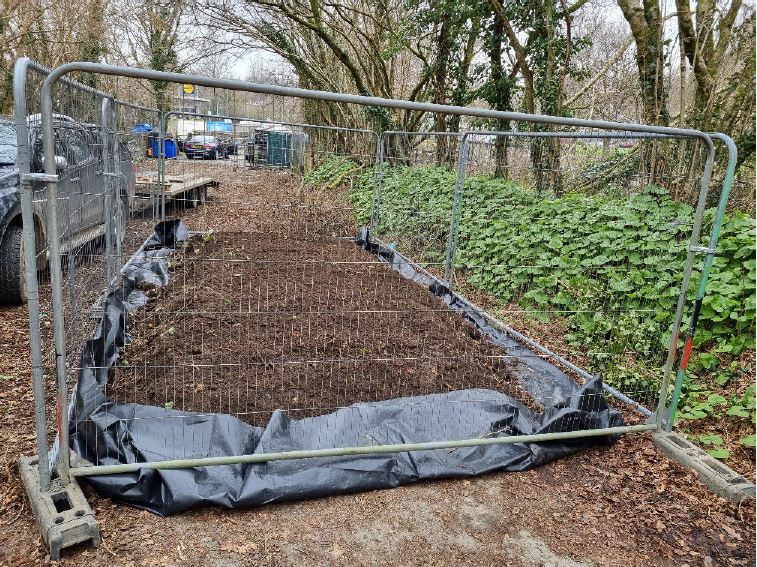
Each stand of Japanese Knotweed was identified and excavated, using an excavator, with the material being screened into a dumper truck and any Japanese Knotweed material hand picked and bagged for off site incineration.
Each stand of Japanese Knotweed was excavated until there was no further evidence of rhizome. In reality what happens is after each bucket of material has been excavated, the remaining void is inspected for any evidence of rhizome, which if still present is marked with marker paint, which helps the excavator driver to target the area for continued excavation.
Once all the stands of Japanese Knotweed have been fully excavated, excavated area, being within the closed off layby, was fenced with Heras Fencing to help keep the site secure prior to the development beginning.
What happens next?
Conservation Land Services Ltd will now monitor both the excavated area and the bund for any evidence of Japanese Knotweed regrowth.
Once the bund area has had two full years of monitoring without any evidence of Japanese Knotweed growth then it will be deemed complete and this material can then be used for landscaping purposes within the development.
Advantages
The control is immediate in that the Japanese Knotweed has been removed from the area required for ground works to develop the main site entrance.
Considerable cost savings have been made by not sending the excavated material to an off site licensed landfill or designing and establishing an on site cell burial.
Images.
